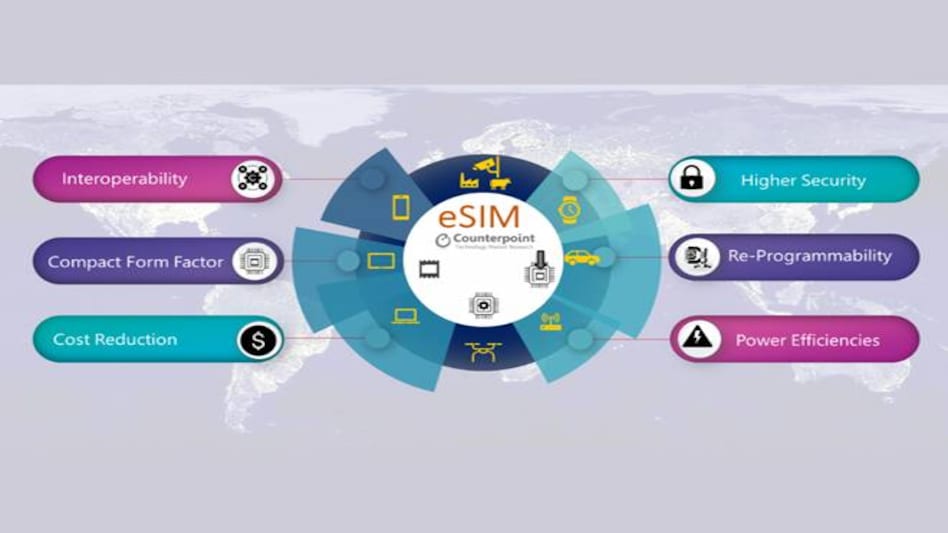

Fairly new but gaining a lot of traction, eSIM-based devices are on the rise. The latest research from Counterpoint's ETO (Emerging Technology Opportunities) Services says that shipments of eSIM-based devices will reach close to two billion units by 2025. In 2018, the shipments were close to 364 million units. The rise in shipments will be mainly due to smartphones and enterprise IoT devices. The research also states that until 2025, a majority of eSIM-based devices will have a hardware chip-based eSIM solution. There is likely to be a rise in the adoption of integrated SIM-based solutions post 2025.
eSIM's compact form factor offers significant space reduction for device manufacturers along with potentially higher security, re-programmability and power efficiencies over the traditional SIM card solutions. For operators, eSIMs can significantly reduce the SIM distribution and activation costs while the potential to generate higher roaming revenues.
Commenting on the market demand for eSIMs, Counterpoint Research Analyst, Satyajit Sinha, says, "The growth of eSIMs will revolutionise how the connectivity across devices will be activated and managed. eSIM offers great benefits for consumers and enterprise customers to seamlessly choose, activate, connect, and manage connectivity on their devices. The current eSIM solution is available in multiple forms, mainly GSMA compliant hardware chip and proprietary software. Currently, the majority of the eSIM deployments have been proprietary soft SIM solutions. However, hardware-based eSIMs are gaining traction, thanks to Apple, automotive OEMs, and wearables."
Leading suppliers of hardware-based eSIMs include Infineon, ST Micro, Gemalto, G+D, Workz, and others. Whereas those for proprietary soft SIM-based eSIM solution include RedteaMobile, Truphone, Telna, ARM, roam2free and others.
Adoption of eSIMs in smartphones should also drive the major volume growth with the adoption of eSIM by top players such as Apple and Google. Other connected devices such as mobile hotspots, routers, connected PCs, drones and smart watches will grow at a higher CAGR due to a relatively smaller base of adoption right now. However, in terms of shipment volumes, smartphones and B2B IoT devices will lead.
Research Director, Neil Shah at Counterpoint Research adds, "Automotive and enterprise IoT devices will continue to remain high on the eSIM adoption curve in the future. Further, eSIM activation rate in cellular enterprise IoT devices will also be much higher than consumer IoT devices. Key drivers being fragmented deployments, module space savings, robust tamper-proof security, flexibility in choosing the best available and competitive cellular network seamlessly as well as saving significantly on physical provisioning, and maintenance costs."
"The initial eSIM solutions in smartphones over the last four years have been proprietary soft eUICC (eSIM) mostly driven by Chinese OEMs in China before Apple and Google adopted GSMA compliant hardware eSIM. However, we will see a shift in adoption to the GSMA compliant hardware-based eUICC for next five to six years alongside integrated SIM or iUICC within system-on-a-chips (SoCs) across different device categories, replacing the less secure proprietary soft eSIM solutions. While hardware-based eUICC will be popular across smartphones and automotive, we believe iSIM or iUICC will be popular across IoT applications," adds Shah.
Also Read: Xiaomi Mi CC9, CC9e, CC9 Meitu Custom Edition unveiled; check out price, specifications, details
Also Read: Vivo Z1 Pro with in-display selfie camera launched in India, price starts at Rs 14,990
Also Read: Facebook fined 2 million euros for violating German transparency law
For Unparalleled coverage of India's Businesses and Economy – Subscribe to Business Today Magazine